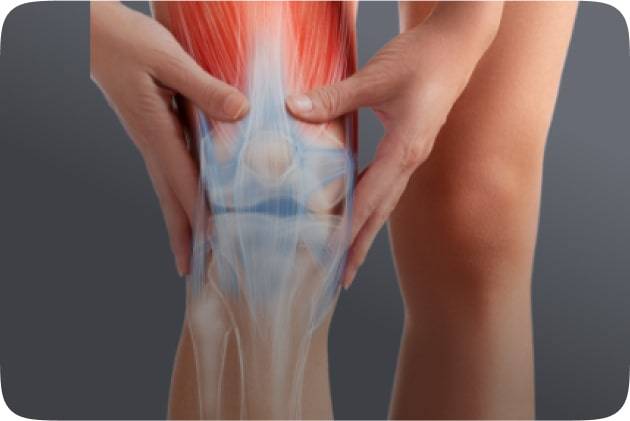Empowering Health: Advancements in Tuberculosis (TB) Care, Diagnosis, and Symptom Recognition
Tuberculosis (TB) remains a formidable global health challenge, impacting millions worldwide annually. Despite this, remarkable strides in TB treatment and prevention have emerged, signaling a promising trajectory towards a TB-free future. In this comprehensive guide, we delve into the forefront of TB management, exploring cutting-edge therapies, diagnostic breakthroughs, and the pivotal role of early detection in combating this relentless disease.
Symptoms of TB:
Pulmonary TB (Affecting the Lungs):
- Persistent Cough: A cough lasting for more than three weeks, often producing sputum, which might be bloody.
- Chest Pain: Discomfort or pain in the chest, particularly while breathing or coughing.
- Fatigue: Unexplained and persistent tiredness and weakness.
- Weight Loss: Unintended weight loss, coupled with a decreased appetite.
- Fever: Frequent low-grade fevers, especially during the evening or night sweats.
- Breathlessness: Shortness of breath even during light physical activity.
Extra-Pulmonary TB (Affecting Other Organs or Tissues):
- Specific Symptoms: These can vary, based on the organ or tissue affected, which may include swelling, pain, or dysfunction specific to the affected area.
When to Seek Medical Attention:
It is vital to consult a healthcare professional if you experience any of the following symptoms, especially if they persist for more than a few weeks:
- Prolonged Cough: If you have a cough lasting more than three weeks.
- Unexplained Weight Loss: Significant weight loss without an apparent cause.
- Persistent Fever: Especially if accompanied by night sweats.
- Persistent Chest Pain: Especially while breathing, coughing, or related to physical activity.
- Fatigue or Weakness: Unexplained and persistent tiredness or weakness.
- Breathlessness: Especially if it occurs during light activity or without a known cause.
- Symptoms of Other TB-affected Areas: If you experience swelling, pain, or dysfunction in areas other than the lungs.
Diagnosis Methods
Embarking on a revolutionary path, novel TB diagnosis methods supersede tradition. From molecular tests’ precision to point-of-care diagnostics’ swift interventions, these innovations propel TB detection into a new era. Witness the cutting-edge capabilities transforming TB diagnosis, heralding a future defined by accuracy, efficiency, and groundbreaking advancements.
Sputum Smear Microscopy
Sputum smear microscopy has long been a cornerstone of TB diagnosis, involving microscopic examination of sputum samples for the presence of acid-fast bacilli (AFB).
Chest X-rays
Chest X-rays are utilized to detect characteristic changes in the lung parenchyma associated with TB, such as infiltrates, cavities, and miliary patterns. While not definitive for TB diagnosis alone, they play a crucial role in supporting clinical suspicion of pulmonary TB.
Tuberculin Skin Test (TST)
The tuberculin skin test, also known as the Mantoux test, involves injecting a small amount of purified TB protein (tuberculin) into the skin to assess the immune response. While it has been used for decades, the TST has limitations, including the potential for false-positive and false-negative results.
New Diagnosis Methods:
Molecular Tests (e.g., GeneXpert MTB/RIF)
Molecular tests such as the GeneXpert MTB/RIF and Xpert MTB/RIF Ultra have revolutionized TB diagnosis by detecting TB-specific genetic material and rifampicin resistance with high accuracy and speed. These tests offer rapid results, crucially impacting early detection and treatment initiation.
Line Probe Assays (LPAs)
Line probe assays detect specific genetic mutations associated with drug-resistant TB, informing healthcare providers about the pattern of drug resistance directly from patient samples. This contributes to the prompt initiation of appropriate treatment, particularly in cases of multidrug-resistant TB.
Whole-Genome Sequencing (WGS)
Whole-genome sequencing provides comprehensive insight into the genetic code of TB bacteria, enabling precise strain tracking, transmission dynamics analysis, and the identification of mutations linked to drug resistance. This advanced technology enhances our understanding of TB epidemiology and resistance patterns.
Lateral Flow Urine Lipoarabinomannan Assay (LF-LAM)
The LF-LAM is a non-invasive point-of-care test for detecting TB-specific molecules in the urine of people living with HIV. This rapid test aids in diagnosing TB in HIV-positive individuals, offering a practical and effective diagnostic approach in co-infected populations.
The Crucial Role of Early Detection and Diagnosis
Timely and accurate diagnosis of TB is fundamental in reducing transmission, initiating prompt treatment, and curbing the progression of the disease to advanced stages. Innovative diagnostic technologies, including molecular assays and rapid testing kits, have bolstered early detection efforts, enabling healthcare providers to swiftly identify TB cases and commence appropriate interventions.
Early diagnosis also plays a pivotal role in preventing drug resistance. By promptly identifying and treating TB cases, the risk of drug resistance development is mitigated, preserving the effectiveness of existing medications and reducing the burden on healthcare systems.
As we navigate the complex landscape of tuberculosis, it’s evident that innovation is the key to progress. From novel medications to advanced diagnostic techniques, we stand at the brink of transformative change in the fight against TB. By raising awareness, advocating for early detection, and leveraging the latest scientific advancements, we can aspire towards a world where tuberculosis no longer holds sway over millions of lives. Know more about the new advancements in treatments, preventive measures and the Global Challenges here. Together, let’s continue to march forward, driven by hope, knowledge, and unwavering determination towards a TB-free tomorrow.










